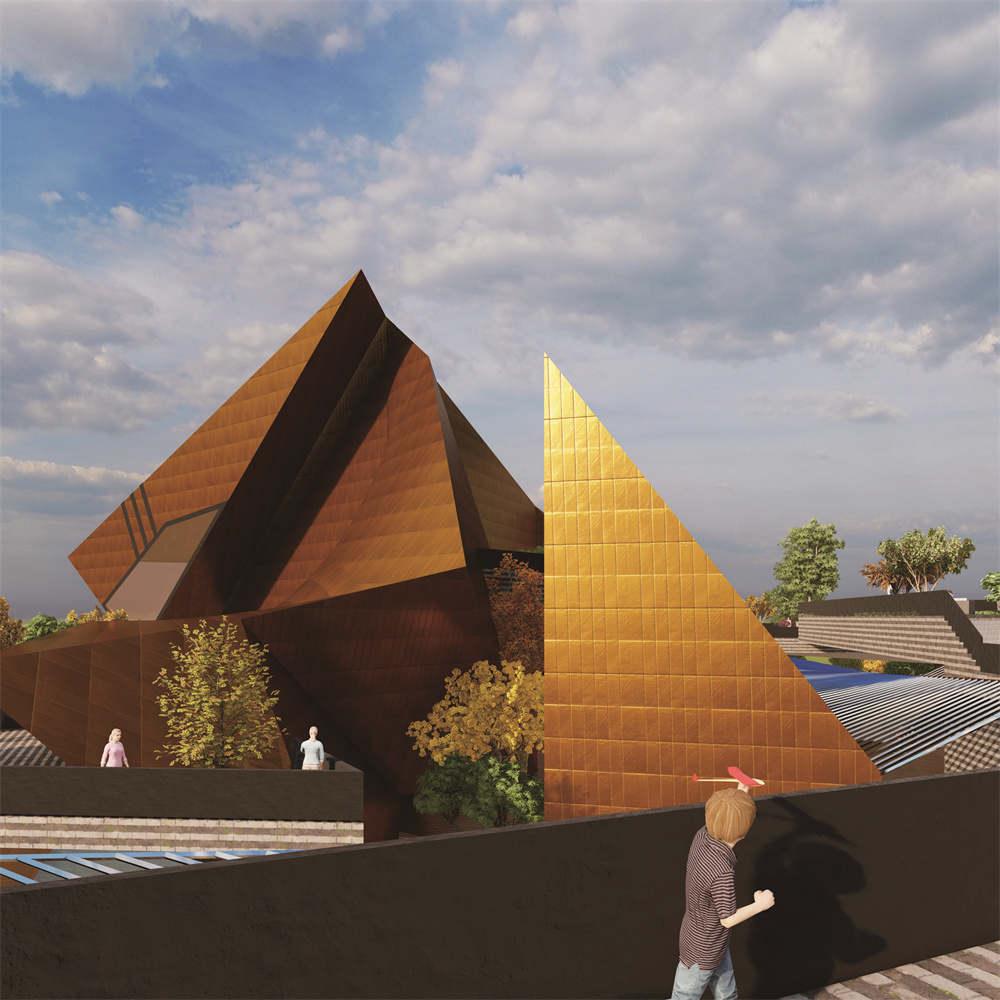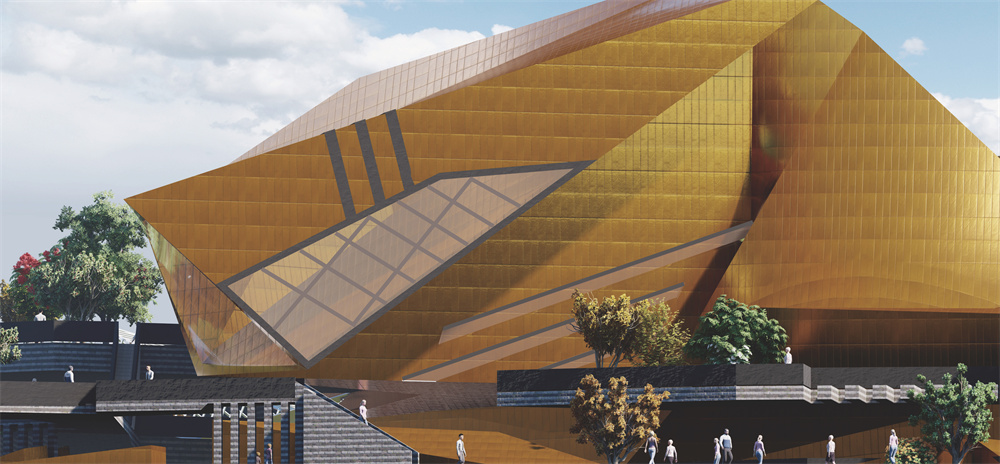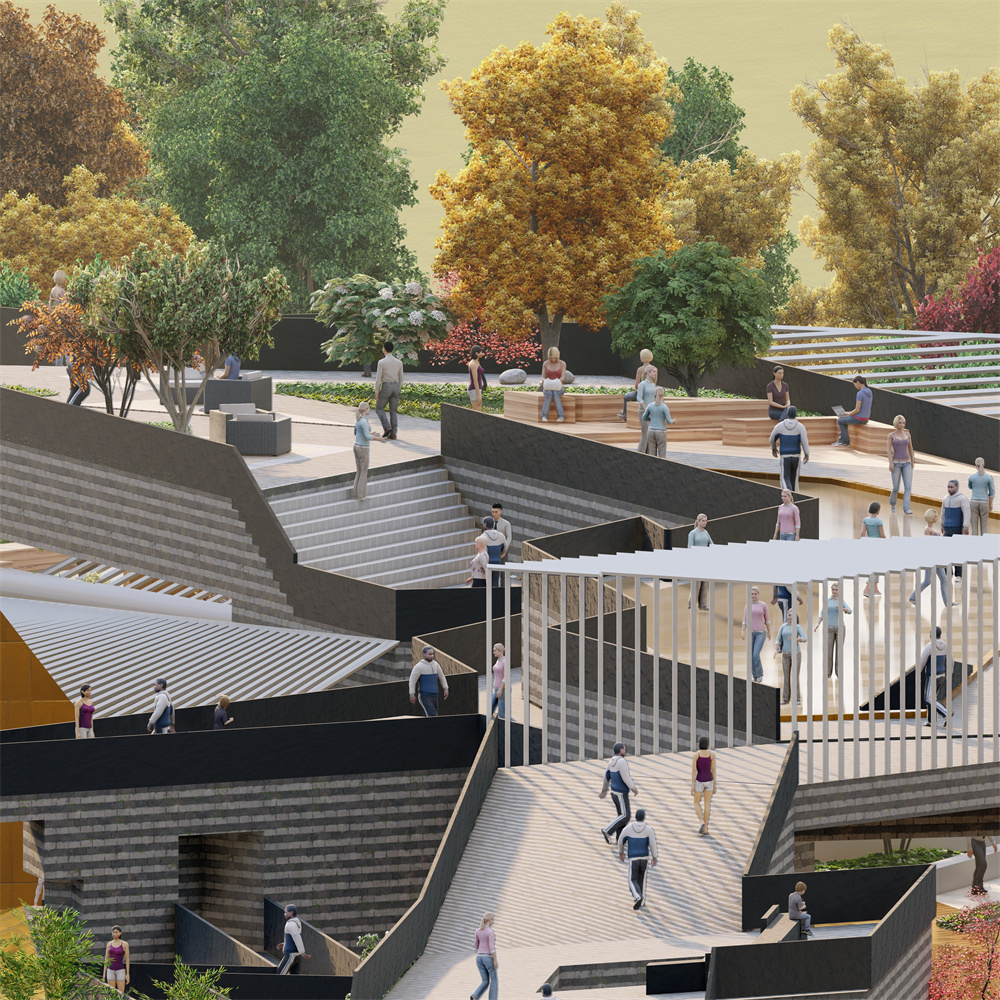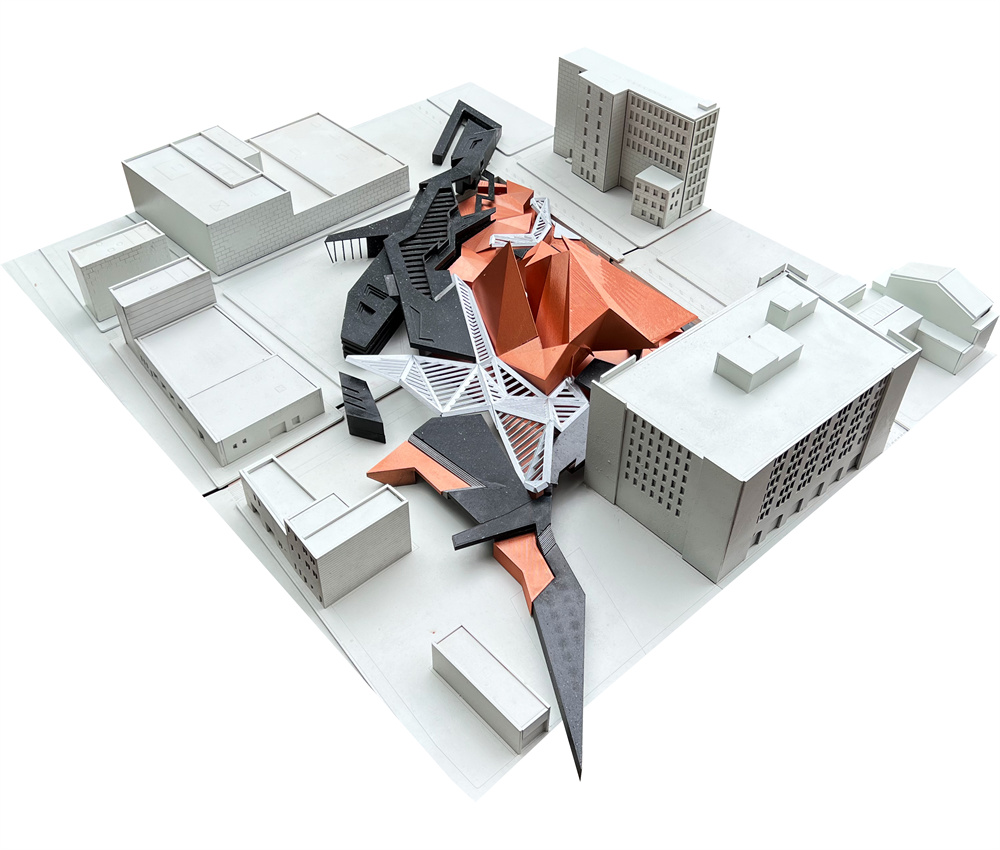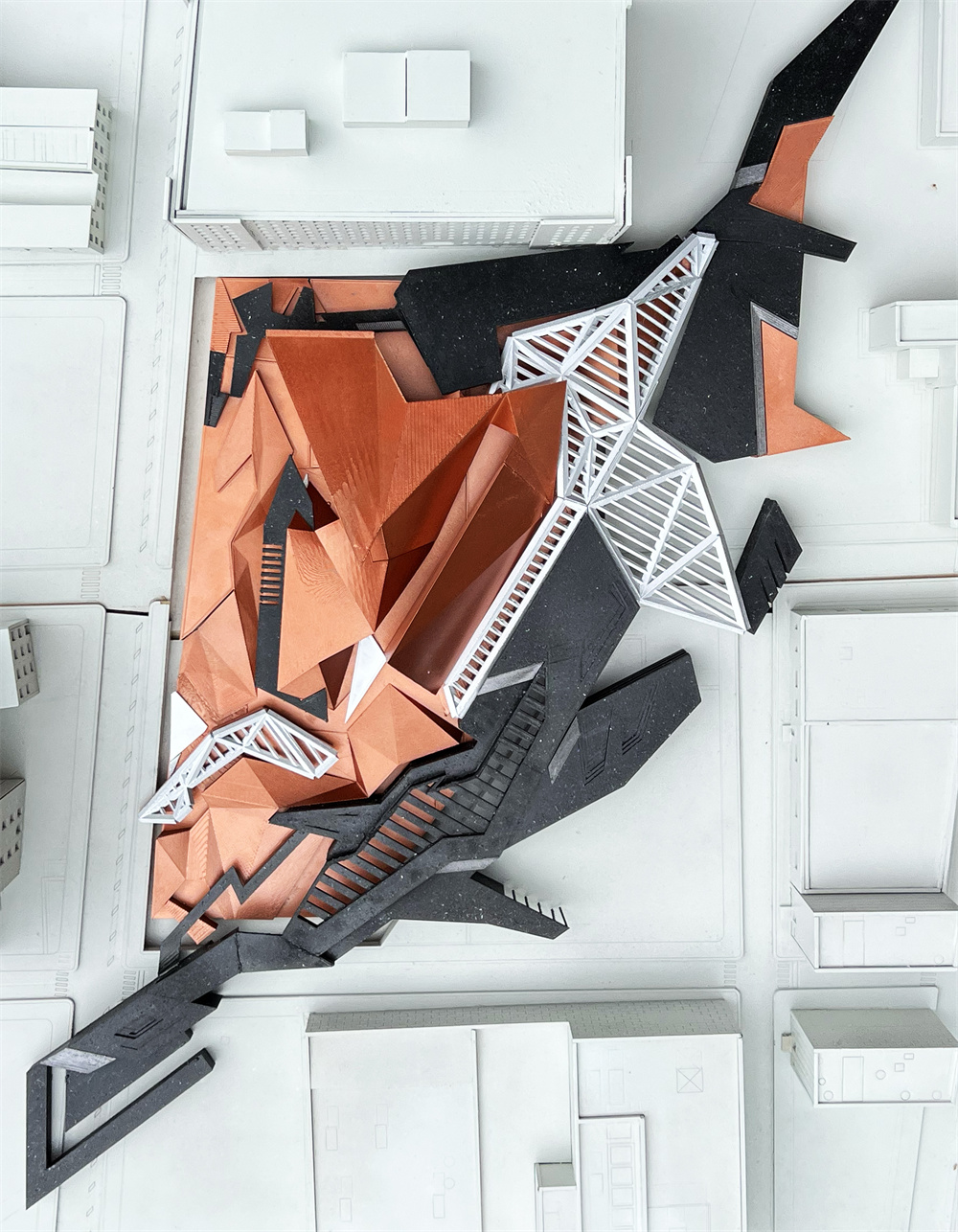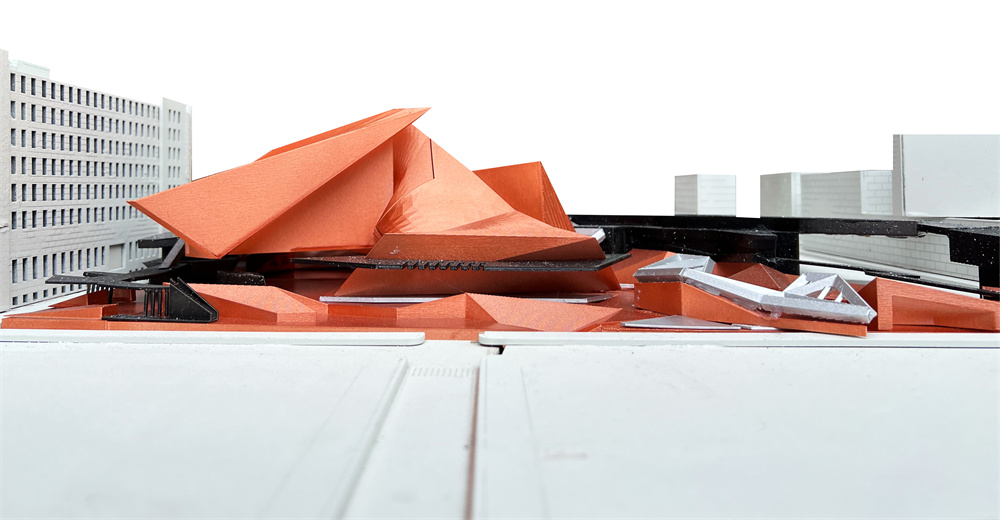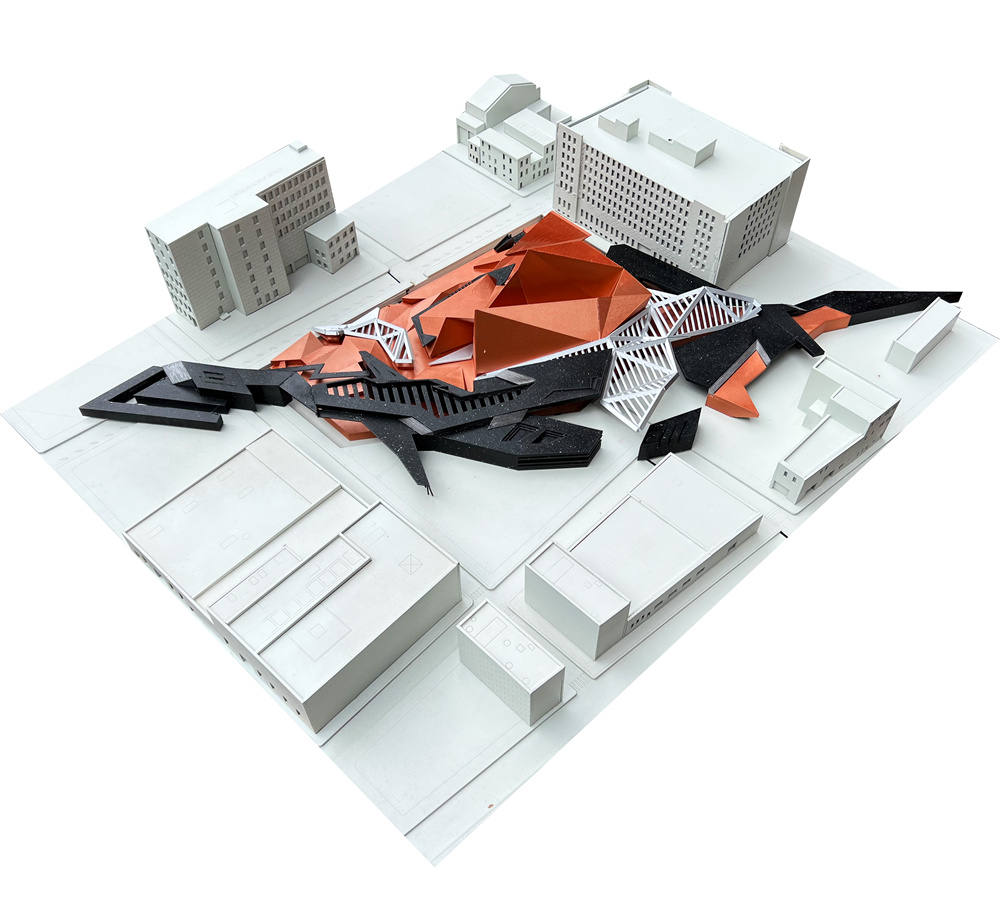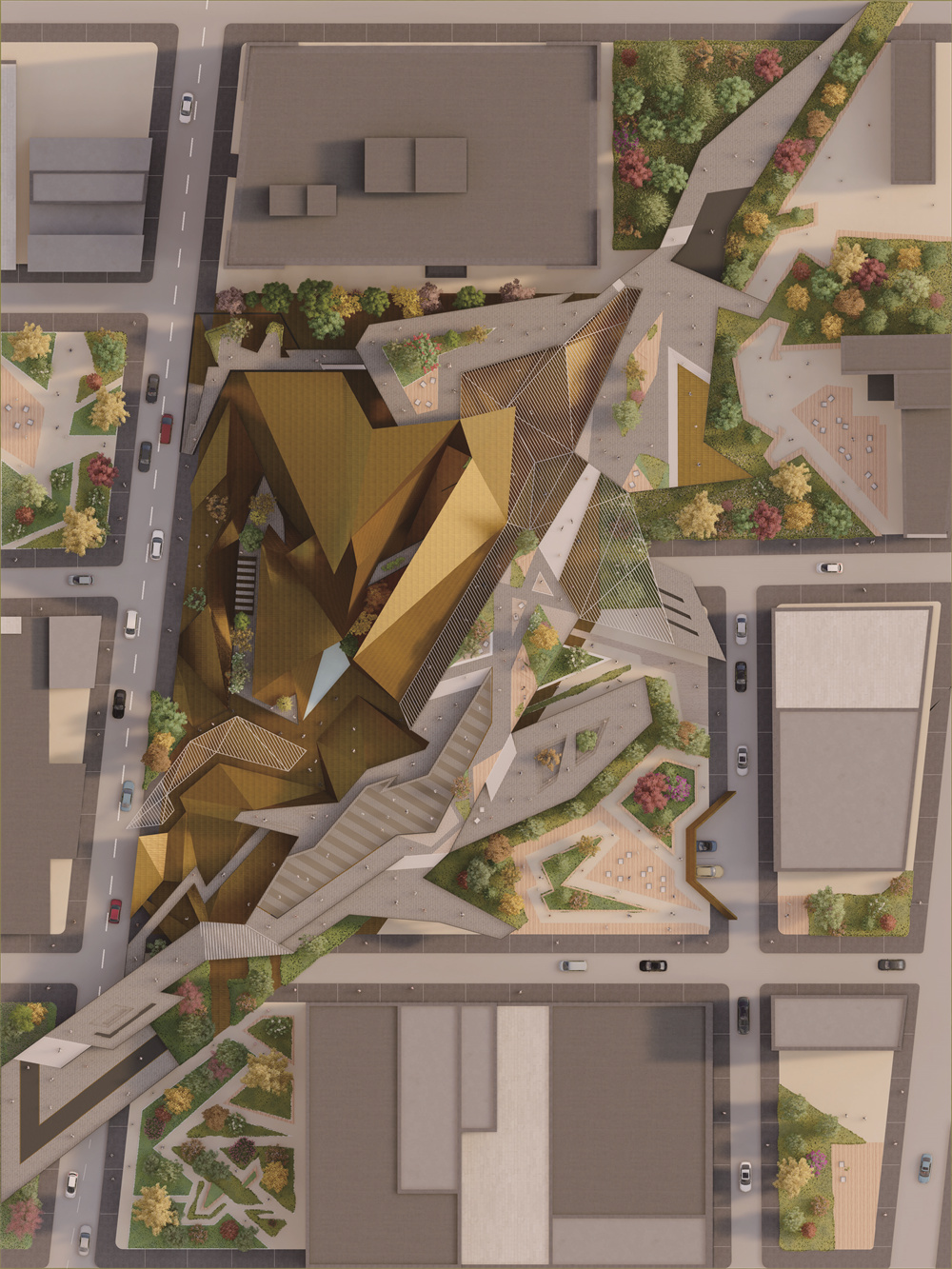Best of Commercial Buildings
Designer / Agency
- Dingding Shi
Category
- Commercial Buildings
Award
- 2023 GOLD
Share this project
PROJECT
DESCRIPTION
Project Name: ALL IN
Location: Philadephia, PA, USA
Design Company: individual project
Chief Designer: Dingding Shi
Assistant Designer: N/A
Area: 50000 SF
Design Cycle: April 2023 - May 2023
Main Materials: Copper, wood, glass, concrete, granite, aluminum, glass fiber reinforced concrete (GFRC)
Photographer: Dingding Shi
Design Concept:
The concept of this project that explores the dichotomy between the formless, non-physical nature of Artificial Intelligence and the tangible, geometric forms that humans inhabit. The primary structure consists of a geometric frame, representing the habitation, human aspect of the design. Enclosed within this frame that the interior space is an organic, sinewy cocoon-like structure, symbolizing the AI's essence as a living organism. This soft, enveloping form stretches and expands in all directions, creating a dynamic interplay between the two contrasting elements. When viewed from one angle, the building looks like a geometric box, but as one moves around the building, the perspective changes, revealing part of the organic cocoon inside. Through this visual transformation, visitors will be curious and explored.
Project introduction:
This project takes advantage of Philadelphia as a vehicle to explore architecture's relationship to the urban condition. To design in the city requires a reading of the layered and complex material morphology of Philadelphia made up of houses, businesses industries, streets, rivers, parks, natural features, and many other kinds of infrastructures. Additionally, a deep reading reveals less visible relationships and patterns that govern and shape its daily activities including politics, demographics, economies, climates, and all the complex histories. The project is a public market for the 21st century.
Site: Callowill Neighborhood of Philadelphia
Callowhill is one of several center city neighborhoods of Philadelphia. Named for the second wife of William Penn, Hannah Callowhill Penn the neighborhood is currently defined by boundary streets South at Vine Street North, South at Spring Street, West at Broad Street and East at 8th Street. Historically, the neighborhood was defined by Callowill Street that runs from east to west across Philadelphia and especially its proximity to the Delaware River, where it had its most early development as a market space and eventually the "red light" or "tenderloin" district of Philadelphia.
Further West from the Delaware River waterfront, the neighborhood developed as an intense large-scale fabrication an industrial home with remnants of these factories and warehouses still existing today. The Reading railroad lines that navigated through the neighborhood on elevated tracks referred to as the Viaduct were essential to growth of Callowhill by feeding industries with laborers and patrons to the tenderloin district. Remaining Viaduct sections today are being redeveloped into "The Rail Park" and is considered a similar urban potential as New York's high-line.
Due to the perceived seedy nature of Callowhill as the Tenderloin district, it became a target for a large-reaching urban renewal project referred to as the Callowhill East Redevelopment Project (1969) Coupled with the development of the vine Street Expressway (1959), the neighborhood became further divorced from Philadelphia center city. Much of the smaller stock buildings were demolished to clear the site for large swaths of property to encourage a new industrial park development close the center cit. The renews was largely a failure and the current Callowhill neighborhood has lost its connection with the waterfront and is typified by empty lots and 31 large commercial and industrial building holdouts that form the Callowhill Industrial Historic District.
Relief
As a formal organization logic, I understand and design reliefs. Unlike typical building relationships of figure / ground where a building is inserted onto a passive site, I explore the potential of figure / figure relationships where ground is designed in active dialogue as participant. The concept of relief offers an opportunity to build a more nuanced threshold between figure and ground relationship through calibrated stages between the extents of two-dimensions and three-dimensional expression.
In addition, reliefs present basic abstract formal compositional properties that are present and incredibly formative in urban morphologies at a range of scales including corners, edges, foreground, background. thresholds, divisions, and overlaps.
I. produce three types of reliet: 1) bas, 2) high and 3) figural. The three types of reliet are originally detined by Adolf Hildebrand in his "The Problem of Form* (1907) Chapter V The Concept of Reliet.
Bas "low relief, raised work" translated from Italian basso-rilievo / Low / shallow relief.
2. High / deep relief
3. Figural in the round reliet
Classic detinitions of reliet like Hildebrand's rely on subtractive techniques of stone carving contemporary work of Louise Nevelson operates within these classic types, but through additive techniques (typically ready-made found carved wood artifacts). By developing figure on figure relies, the studio can use them to probe and tigure the urban morphology of the site.
The rellets become a city within a city. The underling grid work of Nevelson's additive relief work is clearly Mondrian inspired. Mondrian's paintings imbedded urban qualities, none more explicit than "Broadway Boogie Woogie" included in Colin Rowes Collage City.
The ultimate goal is to combine all three types of rellet into one site specitic rellet by midterm. The bas rellet condition can engage ground, landscape, hardscape, thresholds and tectonics at the landscape level. The high relief can motivate surface articulation and fenestration, while the figural relie i can suggest volumetric.
All of these relationships can and should be questioned, subverted and hybridized into unanticipated formations opening a new dialogue and understanding of the sites potential. A successful site relief will embody enough formal multiplicity to engage a complex urban morphology.
Exiled Industries/Entrepreneurial Programming
With increasing interest in reviving the fortunes of struggling communities, older industrial cities represent promising regions for strategic investment and critical centers for promoting inclusive economic growth.
The project will be a public urban market. The program of the market will be detined - a market for what? The previous rich history of 19th and 20th century industrial development in Philadelphia has been challenged with many of the previous industries exiled from the city center. This is the result of complex relationships to land value, labor practices, environmental and health standards and E general economical shift to globalization and free market capitalism.
Through an entrepreneurial approach. Each student will research and propose a contemporary program for the market. The entrepreneurial programs should demonstrate how a new version of former industry can be reintroduced to the contemporary city with a more ethically and environmentally responsible role. To take this on, students will research emerging models of industry that point to contemporary positions on labor, ecology, and technology - or what has been referred to as the Fourth Industrial Revolution - Industry 4.0. The new programming will be modeled explicit in regard to workflow, technology and material processes motivating an immersive experience of the public market. Each specific program will begin to inform the nature of the new urban market fostering a nen typology of unexpected exchange with the community.
Firstly, a large number of sustainable local materials are used in landscape design, such as black cherry in hard wood and flash pine in soft wood. Secondly, considering the issue of energy efficiency, in the design process of the main venue, the designer reduced energy consumption by using insulation, double-glazing windows, energy-efficient appliances and lighting, and incorporating renewable energy sources such as solar panels and wind turbines. At the same time, the orientation of the site buildings can maximize the utilization of natural light and solar thermal energy, thereby reducing the demand for artificial lighting. Adaptively reuse the abandoned Viaduct above the site, while saving materials and protecting heritage, to become a high-altitude railway park that radiates the surrounding community, and resonate by using the same design elements as the site architecture. In addition, this project utilizes a large area of diverse greenery on the site to reduce pollution and increase people's sense of happiness and comfort through this biophilia effect.

Designer:Dingding Shi

